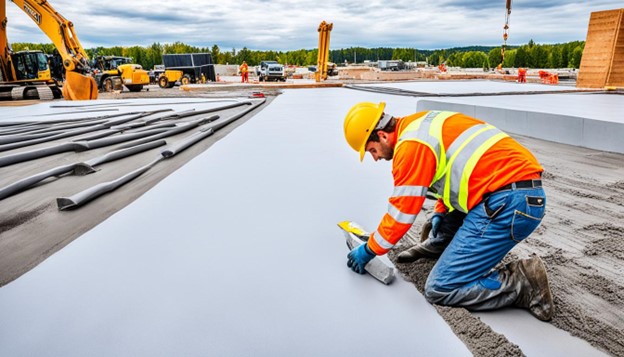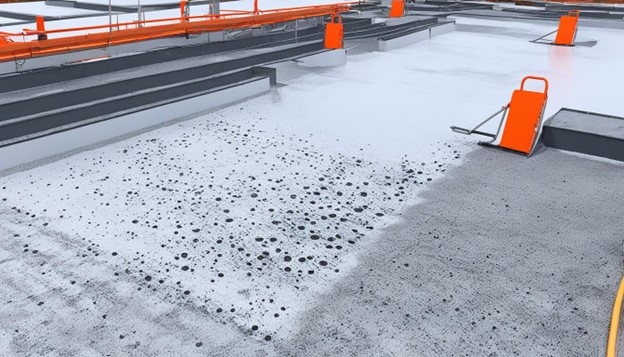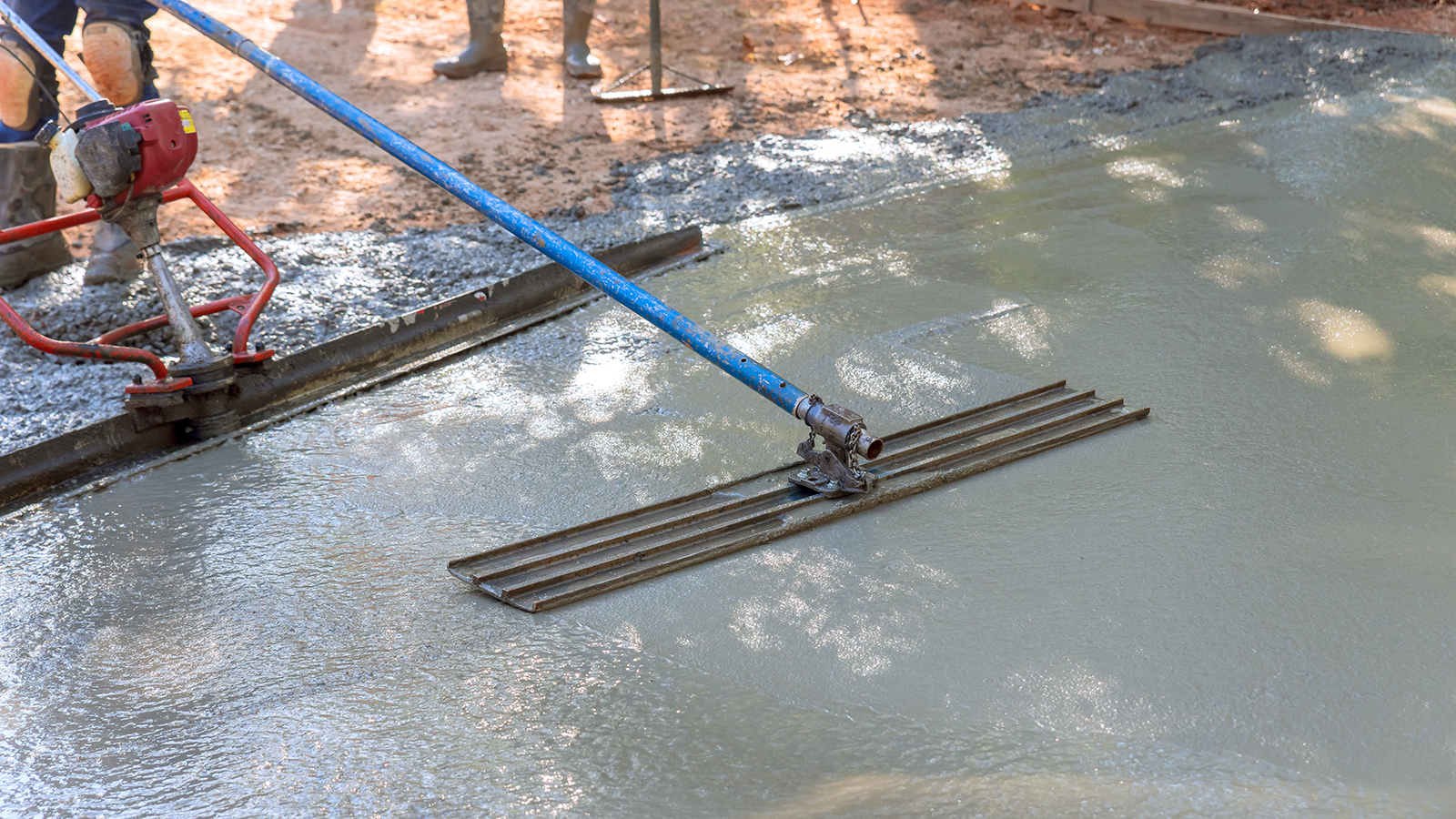Achieving Optimal Concrete Curing Conditions in Commercial Construction
The strength and durability of commercial structures significantly rely on the process of Concrete Curing. In the dynamic construction industry, the expectation for Optimal Concrete Results remains high. With over twenty years in the field, MBC Management has showcased that Concrete Curing Conditions are crucial for the integrity of Commercial Construction projects. Proper curing is essential; it differentiates enduring buildings from those that are fleeting to improve lifespan and maintenance costs.
Curing combines critical temperature control and moisture retention; which requires expertise immediately after concrete placement and finishing. Factors including mix proportions, environment, concrete dimensions, and exposure conditions are pivotal in curing efficacy. By adopting standards from the American Concrete Institute (ACI) and using methods like ponding and insulation blankets, the blend of science and craftsmanship can maximize the strength of the concrete.

Key Takeaways
-
-
- Maintaining specific temperature and moisture levels is crucial for Commercial Concrete Curing.
-
- The durability and strength of concrete depend on consistent and proper curing practices in Commercial Construction.
-
- Guidelines from the American Concrete Institute (ACI) help establish standard curing times and Concrete Curing Conditions.
-
- Techniques such as ponding and the use of curing blankets are integral to achieving Optimal Concrete Results.
- The success of curing in the Construction Industry hinges on adapting to the mix design and environmental exposure.
-
Introduction to Concrete Curing
The importance of the curing of concrete is pivotal in construction for ensuring the longevity and integrity of buildings. Marvels like Dubai’s Burj Khalifa highlight the critical role of proper Concrete Curing Techniques. These techniques are essential for the cement hydration process. This process is crucial for providing concrete with its strength and durability.
Curing Concrete Slabs poses a challenge due to their vast surfaces of concrete. They need consistent moisture to prevent early drying. This can cause cracks and imperfections. To tackle extreme weather, builders employ various Concrete Curing Methods. These methods are designed to work in any climate condition.
-
-
- Water-based techniques like ponding or misting help keep the concrete moist during early stages.
-
- Curing compounds create a protective moisture barrier on the surface of the concrete.
- Insulating blankets or covers maintain temperature and moisture, critical in harsh climates.
-
Choosing the right method is critical. It must suit the environmental conditions, concrete mix specifics, and project schedule. Next, we compare the most common curing methods:
| Method | Benefits | Recommended Conditions |
| Water Curing | Ensures hydration, reduces cracking | Warm conditions, early curing stages |
| Curing Compounds | Good for large areas, conserves water | Various climates, especially when water is scarce |
| Blankets/Covers | Provides thermal protection, keeps moisture | Used in cold to prevent freezing, or hot to minimize evaporation |
As construction advances, the search for innovative Concrete Curing Methods is unending. The aim is to boost concrete’s lifespan and strength. This cements its foundational role in modern infrastructure.
Fundamentals of Curing Concrete
The essential stages of concrete curing are critical to achieving durable, high-quality structures. This process involves controlling conditions that impact cement hydration. This is vital for the strength and longevity of concrete.
What is Concrete Curing?
Concrete curing manages temperature and humidity in fresh concrete. This promotes continuous cement hydration. It’s crucial for maintaining the material’s integrity and performance.
The Science Behind Concrete Curing
The science of concrete curing focuses on hydration’s importance for a durable outcome. Hydration is the chemical reaction between cement and water, forming compounds that provide strength. Without the correct temperature or sufficient curing time, the concrete’s load-bearing capacity and environmental resistance can diminish.
Factors Influencing The Curing of Concrete
Several factors are pivotal to the curing process and the success of concrete. The table below details these factors, emphasizing the essential elements for successful concrete projects.
| Factor | Impact on Curing Process | Optimal Conditions | Recommended Measures |
| Concrete Temperature | Directly affects the rate of hydration and strength development | 50°F to 90°F | Maintain an insulated environment; use heating or cooling as necessary |
| Moisture Levels | Essential for ongoing hydration and to prevent premature drying | Consistently moist throughout the curing period | Use of wet coverings or curing compounds to retain moisture |
| Curing Time | Determines how long the above conditions must be sustained | Minimum of 7 days for most common cement types | Commit to undisturbed curing for the minimum time or longer based on conditions |
| Type of Cement | Dictates the necessary hydration time for optimal strength gain | Specific to ASTM C 150, C 595 types, etc. | Select cement based on project requirements and adjust the curing period accordingly |
By acknowledging these factors and implementing suitable curing techniques, concrete structures can achieve their maximum strength and durability. This resilience is crucial against various pressures and environmental challenges.

Pre-Curing Considerations
Before starting the concrete curing process, several factors affecting its strength need thorough consideration. These include the choice of materials, precise calculations, and monitoring environmental conditions. Together, they underpin the ultimate compressive strength of concrete and integrity of concrete structures.
Material Selection
The cement type and aggregate choice are essential for defining concrete’s compressive strength. It’s vital to select materials that meet the project’s specifications for freshly mixed concrete and its eventual strength. This careful material selection considerably impacts a construction’s durability and strength.
Calculating Water-Cement Ratios for Durability
For concrete to reach its designed strength, it’s critical to accurately calculate the water-cement ratio. This calculation is key to ensuring durability, as it influences the concrete’s curing process. A lower ratio leads to stronger, less permeable concrete, enhancing the structure’s durability.
Ambient Conditions and Their Impact on Curing of Concrete
Temperature of the concrete and humidity significantly affect concrete curing and strength. In challenging weather, proactive steps like adjusting the curing temperature are necessary. Utilizing heated enclosures or evaporation reducers can safeguard the concrete’s strength during crucial curing stages.
Commercial Concrete Curing Techniques
The success of commercial construction significantly depends on the curing process of concrete. The right techniques ensure both immediate and long-term robustness of the concrete surface. The industry employs diverse methods to achieve optimal moist curing. This guarantees the material’s strength and durability of concrete.
Traditional Water Curing Methods
Traditional water curing remains a cornerstone in commercial concrete. It keeps the internal moisture during hardening, improving strength for concrete. Techniques like ponding and immersion maintain the necessary moisture. This is vital for the concrete’s strength.
Membrane Curing
Membrane curing, which conserves water, involves applying a curing compound that seals in moisture. Following ASTM standards C309 and C1315, this method effectively prevents evaporation. It’s particularly useful in dry climates to maintain moisture within the concrete.
Accelerated Curing Techniques Using Heat and Steam
In cold settings, applying heat helps cure concrete adequately. Methods like steam curing, heating coils, and electrically-heated forms are crucial. They are paired with concrete blankets to spread warmth evenly, avoiding freezing. This maintains a proper temperature for curing.
Innovative Curing Technologies
New curing technologies are being developed thanks to advancements in the field. Utilizing lightweight aggregates or absorbent polymers improves the internal curing. This innovation allows large concrete pieces to cure efficiently, highlighting the industry’s evolution.

| Curing Technique | Advantages | Typical Use Case |
| Water Curing (Ponding & Immersion) | High moisture retention for strength gain | Small scale, horizontal surfaces |
| Membrane Curing | Reduced water usage, easy application | Arid environments, large-scale projects |
| Accelerated Heat Curing | Rapid strength development, freeze prevention | Cold climates, time-sensitive projects |
| Innovative Technologies | Improved efficiency for high-volume curing | Complex structures, environmentally conscious builds |
Monitoring Curing Conditions For Commercial Concrete
Ensuring concrete cures optimally is key to maximal strength and durability in commercial construction. The cement-water reaction during hydration impacts concrete quality significantly. Precise monitoring of concrete temperature and ambient conditions during curing is crucial. Modern tools offer real-time data, enhancing concrete curing’s efficiency and success.
Temperature Monitoring: Tools and Techniques
Special equipment regulates concrete temperature during curing. These tools help achieve the correct strength by maintaining the recommended temperature range. Below are methods to measure and control concrete temperature:
-
-
- Embedded thermocouple sensors
-
- Infrared thermometers
-
- Thermal imaging cameras
- Automated temperature control systems
-
Humidity and Its Role in Curing Efficiency
Adequate moisture is vital for the curing compound to seal in hydration. This influences concrete’s strength gain efficiency. Professionals use fogging systems and evaporation retardants to keep humidity at ideal levels, especially in dry or hot climates.
The Use of Maturity Sensors in Curing
Maturity sensors are essential for assessing concrete strength. They measure the concrete’s temperature history, offering reliable strength estimates. This method leverages the known relationship between temperature and strength gain.
| Method | Application | Benefit |
| Thermocouple Sensors | Embedded within concrete | Precise internal temperature monitoring |
| Infrared Thermometry | Non-contact surface temperature assessment | Quick, surface-level temperature checks |
| Thermal Imaging | Surface and near-surface temperature distribution mapping | Detects temperature anomalies that may signal curing issues |
| Maturity Sensors | Embedded to assess concrete strength over time | Provides time-based, real-time strength estimation for critical decision-making |
Combining these technologies and techniques ensures optimal curing. From the initial cement-water reaction to final hardening, maintaining ideal temperature and humidity is key. This guarantees concrete develops strength as intended.
Summary
Embarking on the concrete curing phase of a construction project follows a meticulous process. It starts with carefully selecting materials and calibrating mix ratios. These preliminary steps are crucial for the Complete Curing Process. This process combines traditional and modern techniques to overcome various environmental challenges. Best Practices for Concrete Curing focus on maintaining specific environmental conditions. This is to ensure the concrete gradually reaches its Finalized Concrete Strength.
The interplay between key Concrete Curing Essentials, like temperature and humidity, is vital. Monitoring these factors closely ensures the curing process is optimal, promoting the concrete’s structural integrity. Through strategic Curation of Concrete methods, the gap between theoretical strength and actual, durable outcomes is bridged. MBC Management excels in overseeing these efforts. They ensure the curing period results in concrete that’s ideally suited for commercial projects.
Achieving strong and durable cured concrete requires deep knowledge of cement chemistry. It also demands constant attention to the curing environment, alongside a willingness to adopt new curing methods. With MBC Management at the helm, projects are guided towards exceptional quality. They promise a foundation that stands as a testament to resilience and durability. This underscores their commitment to Best Practices for Concrete Curing. Such practices are fundamental to superior commercial construction.
Frequently Asked Questions
What is the importance of concrete curing in commercial construction?
In commercial construction, concrete curing is essential. It ensures concrete reaches its intended strength and durability. This involves controlling temperature and moisture, promoting proper hydration. This results in a strong, durable concrete structure.
What are the fundamental methods for concrete curing?
Key methods for curing concrete include moisture maintenance via water ponding, fogging, and wet coverings. There’s also the application of membrane-forming curing compounds to limit evaporation. Additionally, applying heat with steam curing in colder conditions prevents freezing.
How long should concrete cure to attain optimal strength?
Curing time can vary, but generally, a minimum of seven days is recommended for Portland cement concrete. This is especially true when temperatures exceed 40 degrees Fahrenheit. Per the American Concrete Institute, curing should continue until concrete achieves 70% of its compression strength goal. This might take longer depending on the environmental conditions and type of concrete used.
Why is temperature control important during the concrete curing process?
Temperature control during curing is critical as it influences the hydration reaction rate and strength development. Keeping the curing temperature between 50°F and 90°F is vital. It helps avoid freezing or too rapid drying. Both can cause defects or weaker concrete.
Can environmental conditions affect the concrete curing process?
Indeed, environmental factors like temperature, humidity, and wind significantly impact concrete curing. Harsh conditions may necessitate specialized curing methods. For instance, heated enclosures in cold climates or evaporation reducers in hot, windy areas are essential. These measures help maintain correct moisture levels and temperature for the concrete.
What is the role of water-cement ratio in concrete durability?
The water-cement ratio is crucial for concrete durability as it affects its porosity and permeability. A lower ratio usually leads to higher strength and durability. However, it’s crucial to balance this to keep the mix workable. Proper hydration of the cement is necessary for this balance.
How do innovative concrete curing technologies improve the process?
New concrete curing technologies advance the process by ensuring more effective and controlled hydration. Technologies include internal moist curing with absorbent polymers and using maturity sensors for real-time strength monitoring. Incorporating lightweight aggregates that gradually release moisture also helps. These methods provide optimal curing, even under difficult conditions.
What are the best practices for concrete curing to ensure final strength?
For optimal concrete curing, it’s crucial to choose curing methods that suit the project’s specifics and environmental challenges. Monitoring and managing temperature and humidity closely is also pivotal. Properly timing the use of curing compounds and maintaining adequate moisture retention is essential. This enables the concrete to achieve its highest strength and durability.



